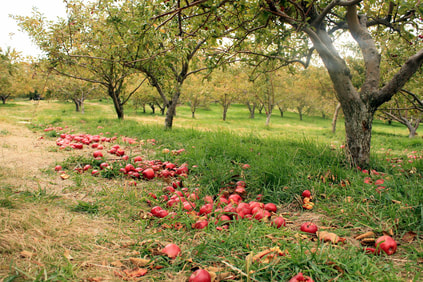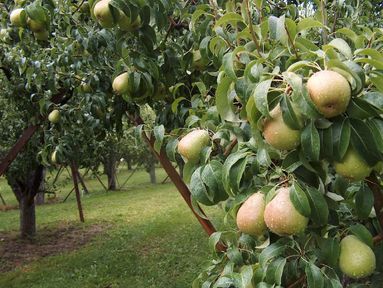Urban Orchards
Orchards have provided mankind a sustainable reoccurring food source for millennia. The idea of planting a plot of trees once and reap an annual crop for hundreds of years is the most energy efficient way to farm.
If you go back 100 years orchards were much more common place across the countryside. Combine harvesters and diesel fuelled agricultural machines were just starting to make their mark on the landscape. Thousands of miles of hedgerows were removed to create larger expansive fields for extensive monocultures. Along with hedgerows went many acres of orchards including many hazel or cob nut orchards. These were a stable of British diet before the industrial revolution providing a rich source of carbohydrate and protein.
Not only do orchards provide a sustainable food source orchard produce is some of the healthiest foods we can eat lacking in the unhealthy modern diet. Apples, Pears, Plums, Damsons, Quinces, Meddlers, Hazel nuts and Sweet Chestnuts are just some of the delights orchards can bring! Most modern cities have huge potential for urban food production using orchards with most trees barely over 4 metres fitting snuggling into the urban fabric.
Another benefit of urban orchards is they can be integrated into other elements of the urban farm. Chicken enclosures can double up as fruit cages with small orchards being fed by the fertility of the chicken manure. The heat island effect of cities allows us to be more ambitious with the species of orchard we grow. I have seen great examples of Apricots, Peaches, Almonds and even a mountain variety of Avocado fruiting in micro climates in London. There is much evidence to suggest trees help cool the city in summer and help retain heat in the summer as well as help improve air quality. It is clear that urban orchards have a rightful place in our towns and cities.
When planning an orchard on a urban farm you must take a few things into consideration. What kind of fruit and nuts do you want to grow? Does your urban farm have the correct conditions? Will they grow well? Remember that it’s easy to get carried away filling up space with new fruit trees but remember each tree requires space to thrive so try to think forward into the future and visualise your urban farm in 5 years time. Do you want to create a wild forest garden type of orchard? If you do then you must try to layer the planting so it catches the suns raise as efficiently as possible.
Use fruit and nut trees grafted onto smaller root stocks, remember you will have to harvest all the produce and trees smaller tree makes this much easier. Urban soils are usually compacted, unfertile, and poorly drained. Be sure to get to know your soil and make sure you dig it deep adding large amounts of organic matter. Also a mycorrhizal application such as Rootgrow will give your newly planted orchard a boost.
Book on Urban Orchards
Growing Urban Orchards is a complete bible on the concept of growing fruit and nut orchards in urban environments. The book covers everything from site selection, pruning, harvesting, pollination and species selection.







